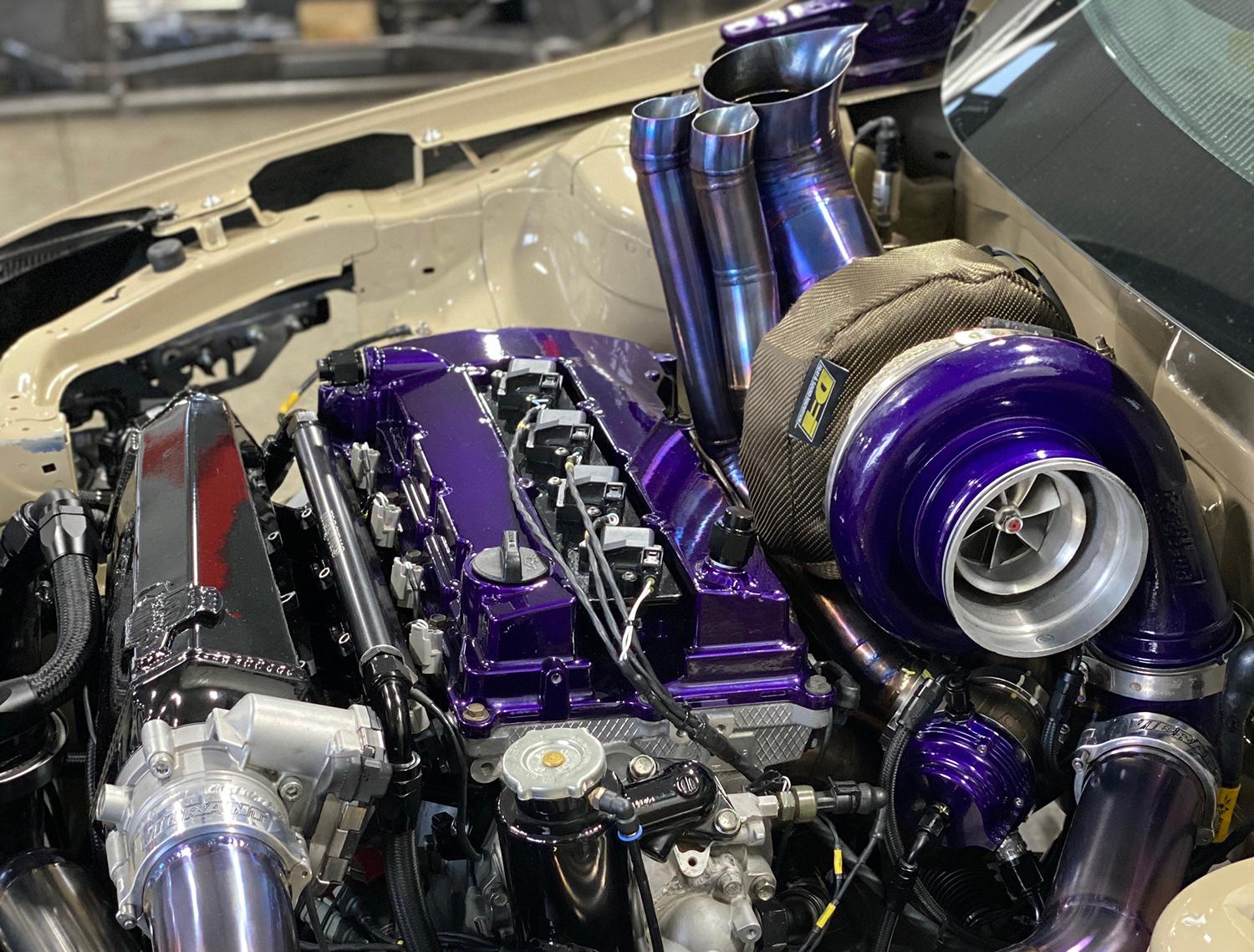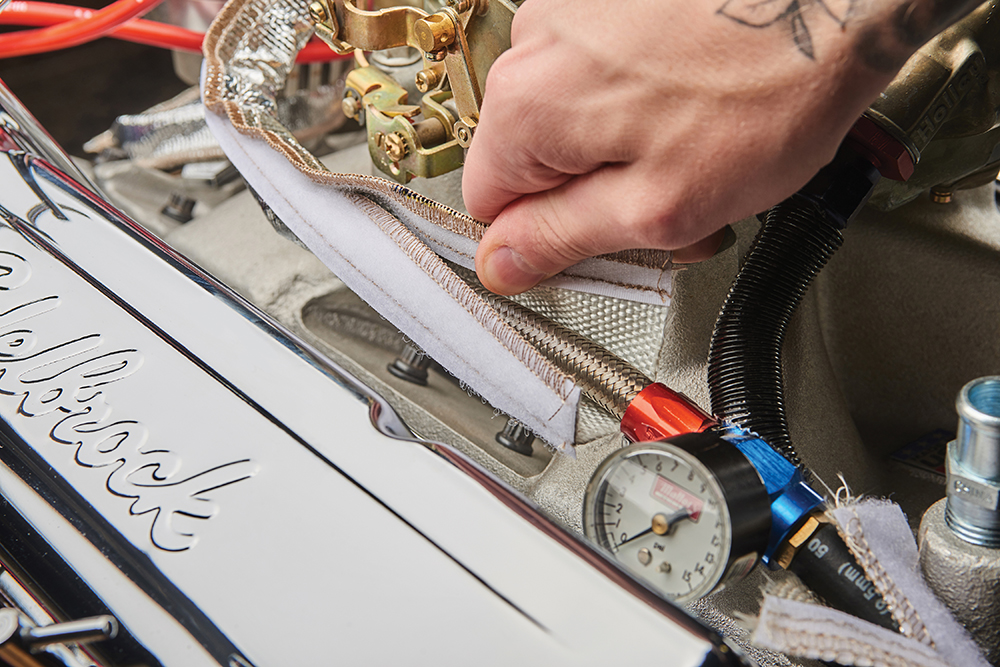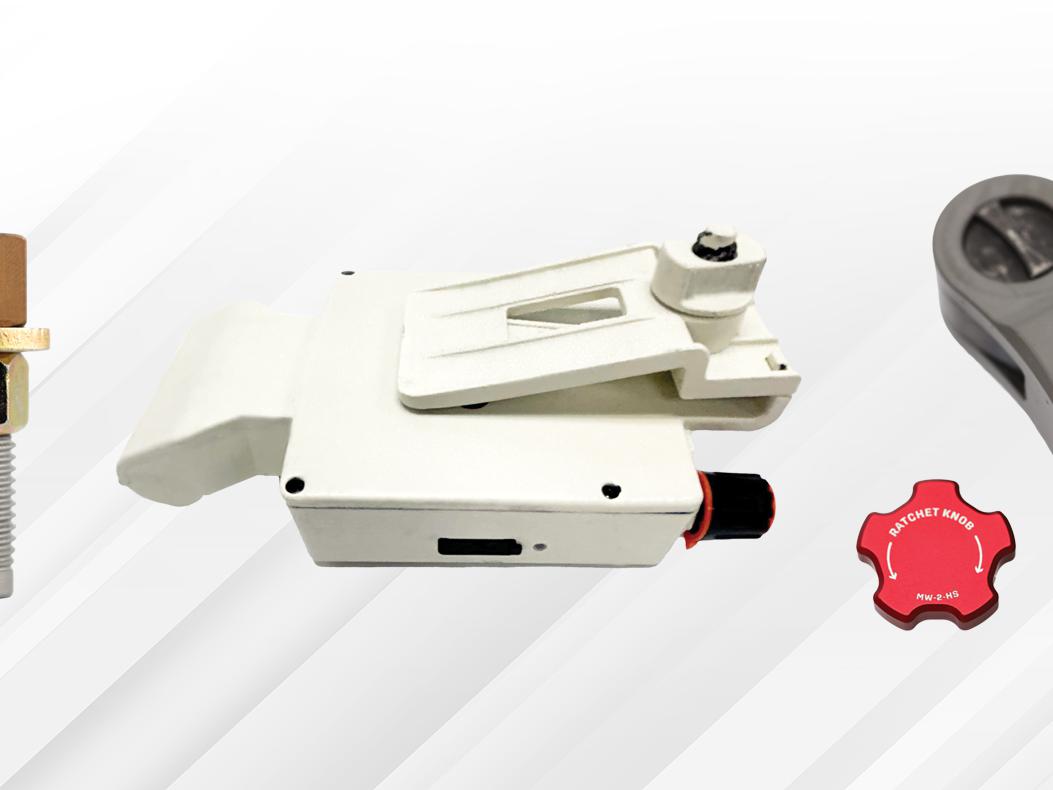Ask The Experts: Heat Suppression

Beyond minimizing damage from high temperatures, heat protection products can also improve performance. For example, this turbocharger blanket from DEI retains the heat in the source—the turbo—which then allows it to spool faster with less turbo lag.
Discover the best ways to prevent high-temperature transfer from sensitive—and expensive—race components.
What’s the best way to maintain air intake and fuel temperatures to prevent issues with hot fuel, such as vapor lock and power loss?
“The best way to stop heat is at the source,” said Heatshield Products’ Steve Heye. “This applies to all questions when it comes to controlling/reducing heat, either radiated or direct-contact. A thermal insulation on a heat source like exhaust pipes, headers, or turbocharger downpipes is the most effective solution at containing heat. If insulating the heat source isn’t an option or not preferred, a radiant heat shield (something that deflects heat away) is the way to go.”
When it comes to air intake components, “shielding the air box, air intake tube, and intake manifold itself helps lower air intake temperatures and the temperature of the air/fuel charge, which helps increase power through the cooler, denser air,” Heye added.
“You want to apply product directly to the intake tube itself or block the heat source that’s closest to the intake,” said Eric Baun of DEI. “Especially in turbo applications, keeping a blanket on the turbocharger keeps heat in and doesn’t allow it to soak over to the intake side. Keeping heat in the turbo also allows it to spool faster so you have less turbo lag. That isn’t helping the intake temperatures as much as helping the exhaust flow at that end.”
How do you keep the driver comfortable and protected from the effects of heat during a long race?
“This is a real issue for endurance racers in the car for a long time, anything longer than an hour or more,” said Baun. Much of the heat is coming in from the engine compartment, but the transmission tunnel can be a heat source, too, he pointed out, especially if exhaust pipes are routed through there.
Applying heat barriers in the engine bay, such as exhaust wrap on the headers, “brings down the radiant temperatures under the hood so they won’t seep into the cabin,” Baun said.
But Heye pointed out that “many classes across different racing genres won’t let you insulate or wrap the exhaust system. If rules don’t allow insulating the exhaust system, the next option is shielding the race car interior from the outside using a thermal barrier to deflect radiant heat away from the floors, firewall and transmission tunnel.”
All three companies offer heat barrier products that can be used on the floor and transmission tunnel. They’re made from lightweight materials, so they don’t add weight to the car, and most are installed using adhesive backing.
“Some applications are too demanding for an adhesive-backed material, which is where our other heat shields come into play,” said Jeremy White of Thermo-Tec. “They can be mechanically fastened to your vehicle using bolts and washers.”
DEI and Heatshield Products also offer barrier products with mechanical instead of adhesive installation.

Transmission cables under the car are vulnerable to heat. What’s the best way to protect them?
“Our sleeving category has everything you need to protect every line on your vehicle,” said White.
Heye added, “A heat shield sleeve is the way to go. We offer different versions: heat reflective, heat reducing, open seam, tube sleeves, and so on. Some of these are offered with built-in high-temperature hook-and-loop fastening so they can be easily installed and just as easily removed if necessary.
“When it comes to thermal barrier sleeves, the question we are asked most often is, ‘Can the heat sleeve be loose around what it’s protecting, or does it need to be tight?’” Heye explained. “Loose is fine, snug is better, but the ends of the sleeve must be tight or sealed onto what the sleeve is protecting. This keeps heat from getting inside the sleeve and still causing issues. This is the small but important aspect customers miss the most when installing heat shield sleeving.”
“Wrapping the exhaust would help as well,” added Baun. “Anywhere you will wrap will cut down on radiant heat in the area. But line sleeving is the quick, easy way to keep from losing time in the pits waiting for these cables to cool down.”
SOURCES
–
Design Engineering, Inc.
designengineering.com
Heatshield Products
heatshieldproducts.com
Thermo-Tec
thermotec.com
 MEMBERSHIP LOGIN
MEMBERSHIP LOGIN JOIN PRI
JOIN PRI


